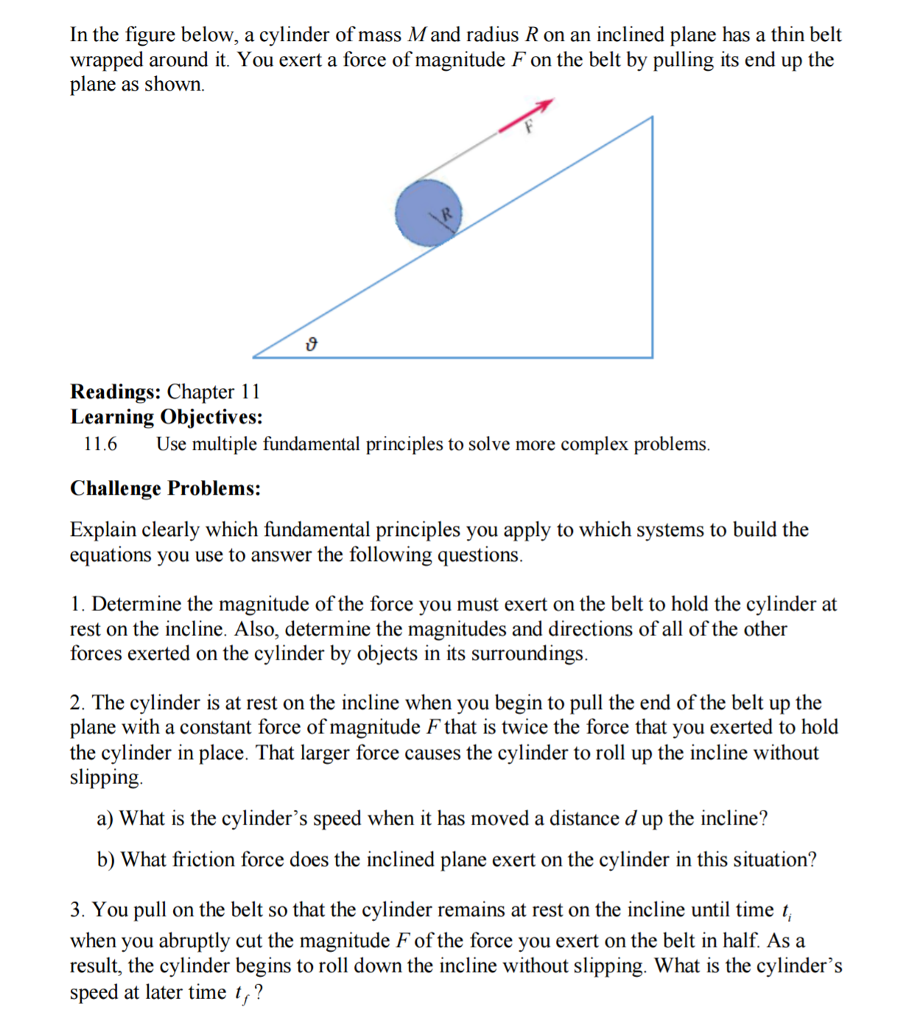Answered step by step
Verified Expert Solution
Question
1 Approved Answer
In the figure below, a cylinder of mass M and radius R on an inclined plane has a thin belt wrapped around it. You

In the figure below, a cylinder of mass M and radius R on an inclined plane has a thin belt wrapped around it. You exert a force of magnitude F on the belt by pulling its end up the plane as shown. Readings: Chapter 11 Learning Objectives: 11.6 Use multiple fundamental principles to solve more complex problems. Challenge Problems: Explain clearly which fundamental principles you apply to which systems to build the equations you use to answer the following questions. 1. Determine the magnitude of the force you must exert on the belt to hold the cylinder at rest on the incline. Also, determine the magnitudes and directions of all of the other forces exerted on the cylinder by objects in its surroundings. 2. The cylinder is at rest on the incline when you begin to pull the end of the belt up the plane with a constant force of magnitude F that is twice the force that you exerted to hold the cylinder in place. That larger force causes the cylinder to roll up the incline without slipping. a) What is the cylinder's speed when it has moved a distance d up the incline? b) What friction force does the inclined plane exert on the cylinder in this situation? 3. You pull on the belt so that the cylinder remains at rest on the incline until time t, when you abruptly cut the magnitude F of the force you exert on the belt in half. As a result, the cylinder begins to roll down the incline without slipping. What is the cylinder's speed at later time t,?
Step by Step Solution
★★★★★
3.54 Rating (161 Votes )
There are 3 Steps involved in it
Step: 1

Get Instant Access to Expert-Tailored Solutions
See step-by-step solutions with expert insights and AI powered tools for academic success
Step: 2

Step: 3

Ace Your Homework with AI
Get the answers you need in no time with our AI-driven, step-by-step assistance
Get Started


